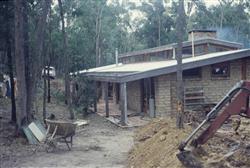 Develops skills to determine the impact of building construction characteristics upon human health, and to recommend innovations in building design to improve habitability. It covers building materials, construction techniques, electrical wiring, temperature & light control, ventilation, plumbing, ergonomics and psychological factors.
Develops skills to determine the impact of building construction characteristics upon human health, and to recommend innovations in building design to improve habitability. It covers building materials, construction techniques, electrical wiring, temperature & light control, ventilation, plumbing, ergonomics and psychological factors.
Who should do this?
- Architects, builders, developers
- Building and health inspectors
- Engineers, landscape designers
- Building supply and manufacturing companies
- Health practitioners, wellbeing consultants
- Environmental consultants
- Anyone else concerned with how building structures affect human health